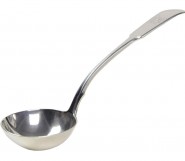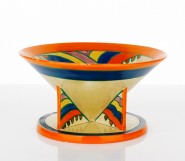Lot #11 - 2003 Ducati 999S - Underrated replacement for the Ducati 916
-
Auction House:Donington Auctions
-
Sale Name:Collectors' Motorcycles & Cars (New South Wales)
-
Sale Date:12 Dec 2021 ~ 12noon (AEDT)
-
Lot #:11
-
Lot Description:2003 Ducati 999S - Underrated replacement for the Ducati 916
A product of Pierre Terblanche, the 999 replaced the 996 and 998 but retained many of Ducati's trademark features. Purposefully long, low, and narrow, to reduce frontal area, the 999 was also the first ergonomically designed sports bike, with the rider an integral component. The 999 also introduced the new Testastretta engine across the range, this replacing the Desmoquattro that had powered Ducati Superbikes for the previous 15 years. The 999 was also immediately successful on the race track; the 999 winning every round of the 2003 World Superbike Championship and Neil Hodgson taking the title. The 999 was released for 2003, and available in three versions, the 999R, 999S and 999. All were powered by Testastretta motors, the 999R and 999S with sand-cast deep sump crankcases, and the 999 with die-cast low sump crankcases. Powering the 999S was the 998cc Testastretta, similar to the first 996R and 2002 998S. Development of the Testastretta, or narrow head, began during 1998 when Massimo Bordi approached retired Formula One Ferrari engineer Ing. Angiolino Marchetti to assist in the design. Marchetti worked closely with Bordi, but died during 1999 without seeing the project to fruition. The cylinder head design featured a narrower 25º included valve angle, requiring a redesign of the Desmoquattro rocker layout. Marchetti's solution to relocate the opening rocker arms outwards, keeping the closing rockers inside. To support the closing arms inside the head while maintaining a central spark plug, there was a central cast steel sleeve inserted for the spark plug. The hollow camshafts rotated in plain bearings, contributing to the more compact cylinder head. With a 100 mm bore and 63.5 mm stroke the new engine displaced 998cc, and the larger bore and shallower valve angle allowed for larger intake valves than on the 996. As with all Ducati racing engines since 1998 the sand-cast crankcases also featured a "coppa bossa", or bottom cup, placing the oil pickup lower. The cylinders were rotated backwards 10º to assist gravity oil scavenging from the front cylinder. Another advantage of the Testastretta cylinder head design was steeper, more downdraft porting to give the mixture a straighter path to the valves. While retaining toothed belt drive to the four overhead camshafts, this was also improved on the Testastretta. One of the design weaknesses of the earlier Desmoquattro was the extreme angle between the upper timing belt pulleys and the new system used lower positioned pulleys with a revised belt tensioning system. The 999S featured 11.4:1 pistons, and a lighter and more compact 5.9M Marelli electronic ignition and injection control unit. The throttle bodies were increased to 54mm, with a single spray-type injector per cylinder. The power was 136 horsepower at 9,750rpm. The 999 chassis was completely updated and included five-way adjustable footpegs and on Monoposto versions a seat/tank unit that slid fore and aft 20mm to adjust to the height of the rider. With 30% fewer parts simplification and ease of maintenance were primary considerations. Technical updates included an asymmetrical exhaust, the front pipe diameter increasing from 45 to 55mm compared to the constant 45mm diameter of the rear pipe, to simulate a symmetrical length system. The airbox was also larger, at 12.5 litres, and no longer sealed by the bottom of the fuel tank. While retaining the signature steel trellis frame, the swingarm was now double-sided, and the chassis was designed to place more weight on the front wheel. As on the 996 the front fork rake was adjustable due to an eccentric in the steering head (23.5-24.5°), altering trail without affecting the 1420mm wheelbase. The 43mm front fork and rear suspension on the 999R and 999S was &Öhlins. The front brake discs remained 320mm, but the rear disc was increased slightly over the 996, to 240mm. As evidenced by its success in the World Superbike Championship, the 999 was an improvement over the 998. The attention to weight distribution, lowering the centre of gravity, and the longer swingarm and wheelbase, contributed to machine with improved stability under braking and acceleration. The example on offer here is in exceptional original condition and performs faultlessly. The mileage from new is only 12,028km. This motorcycle is being sold unregistered. -
Estimate:A$15,000 - 20,000
-
Realised Price:
-
Category:Automobiles & Accessories
This Sale has been held and this item is no longer available. Details are provided for information purposes only.















